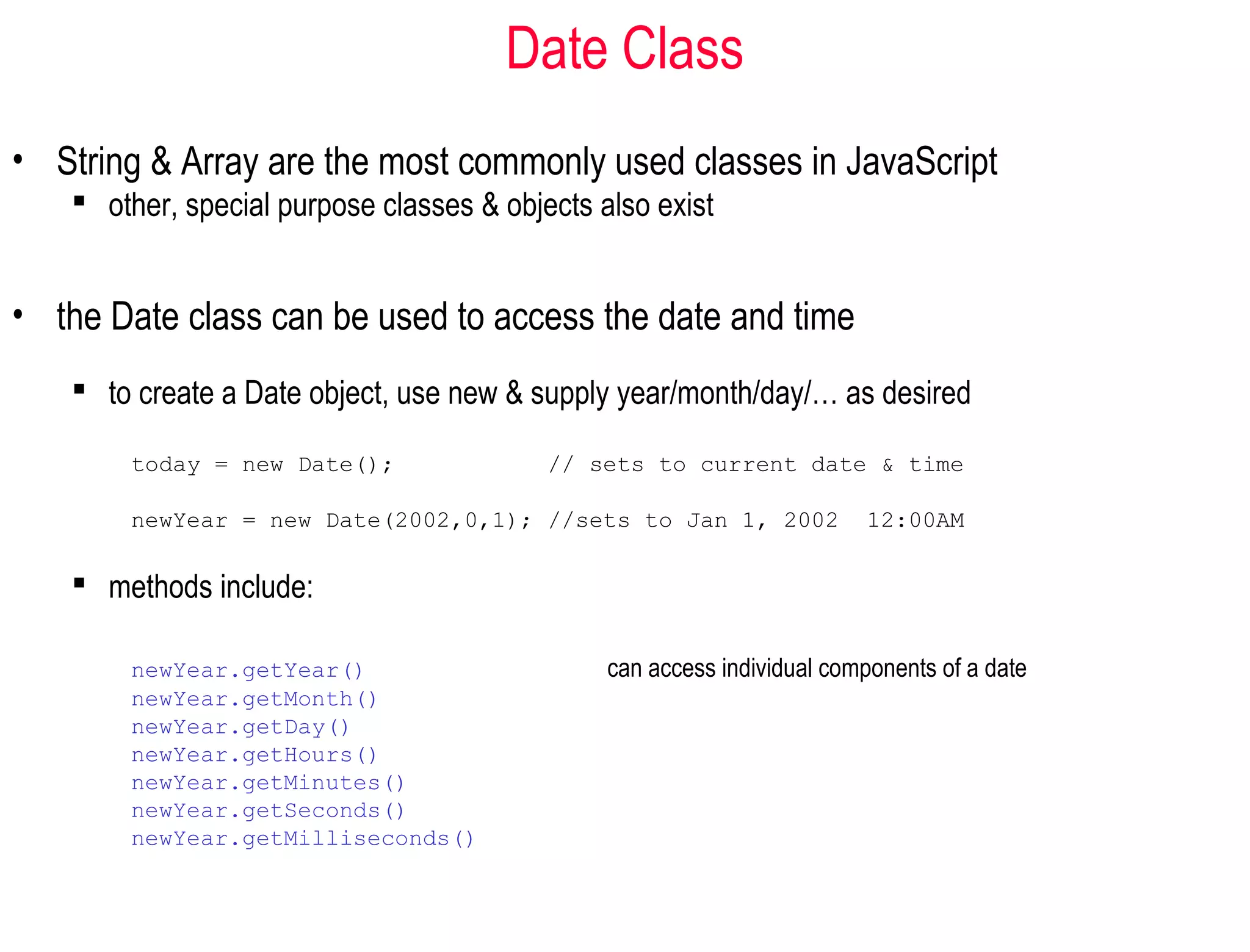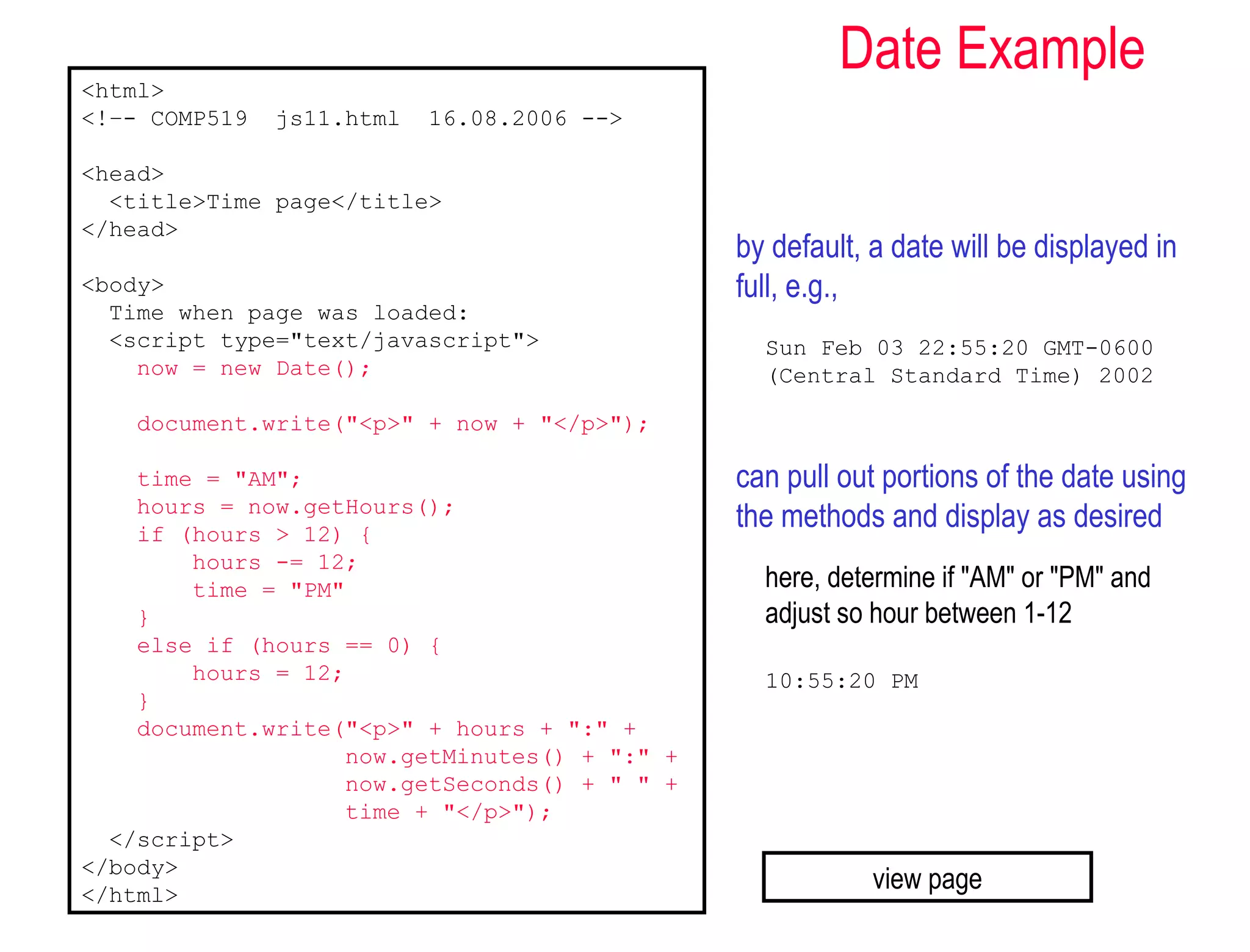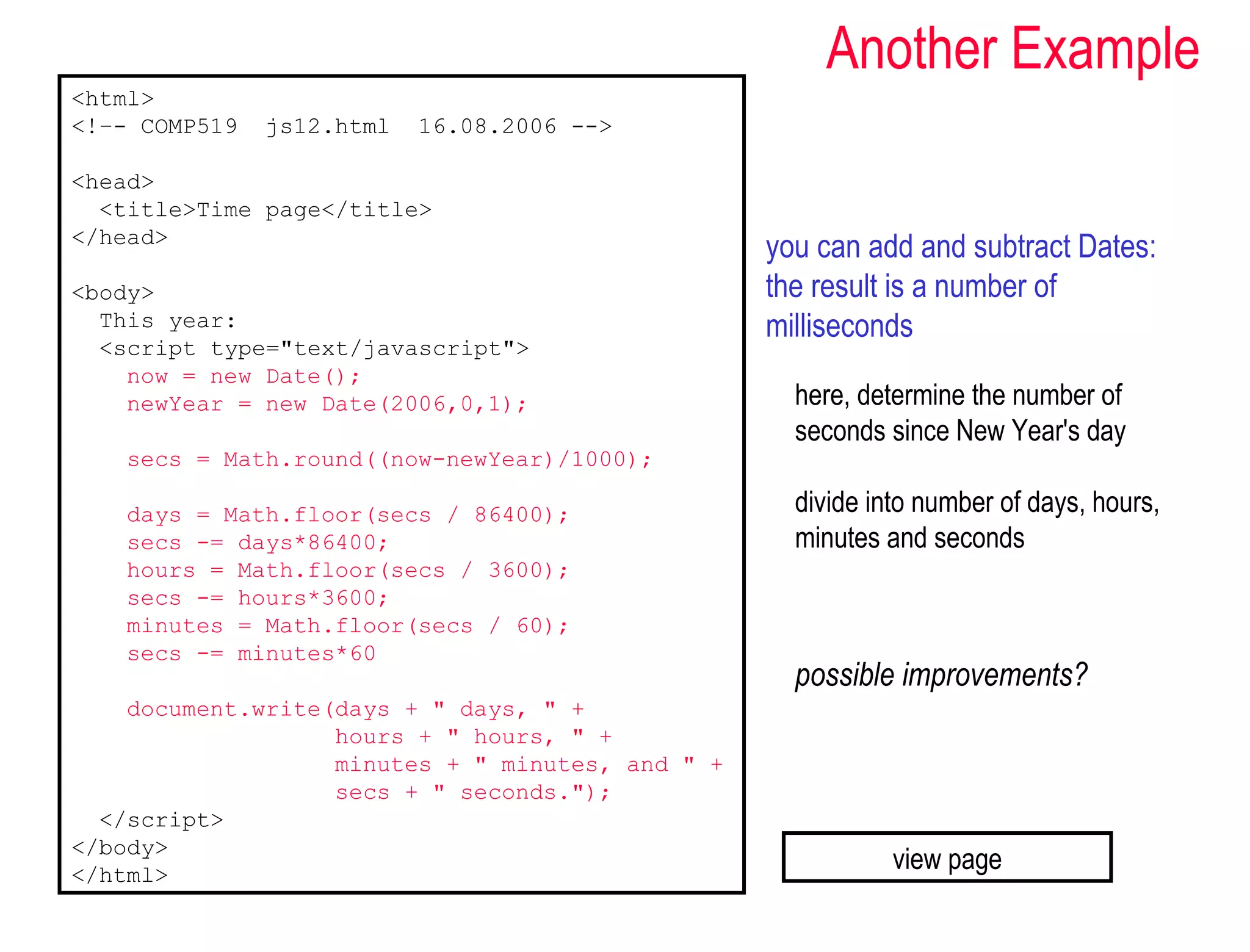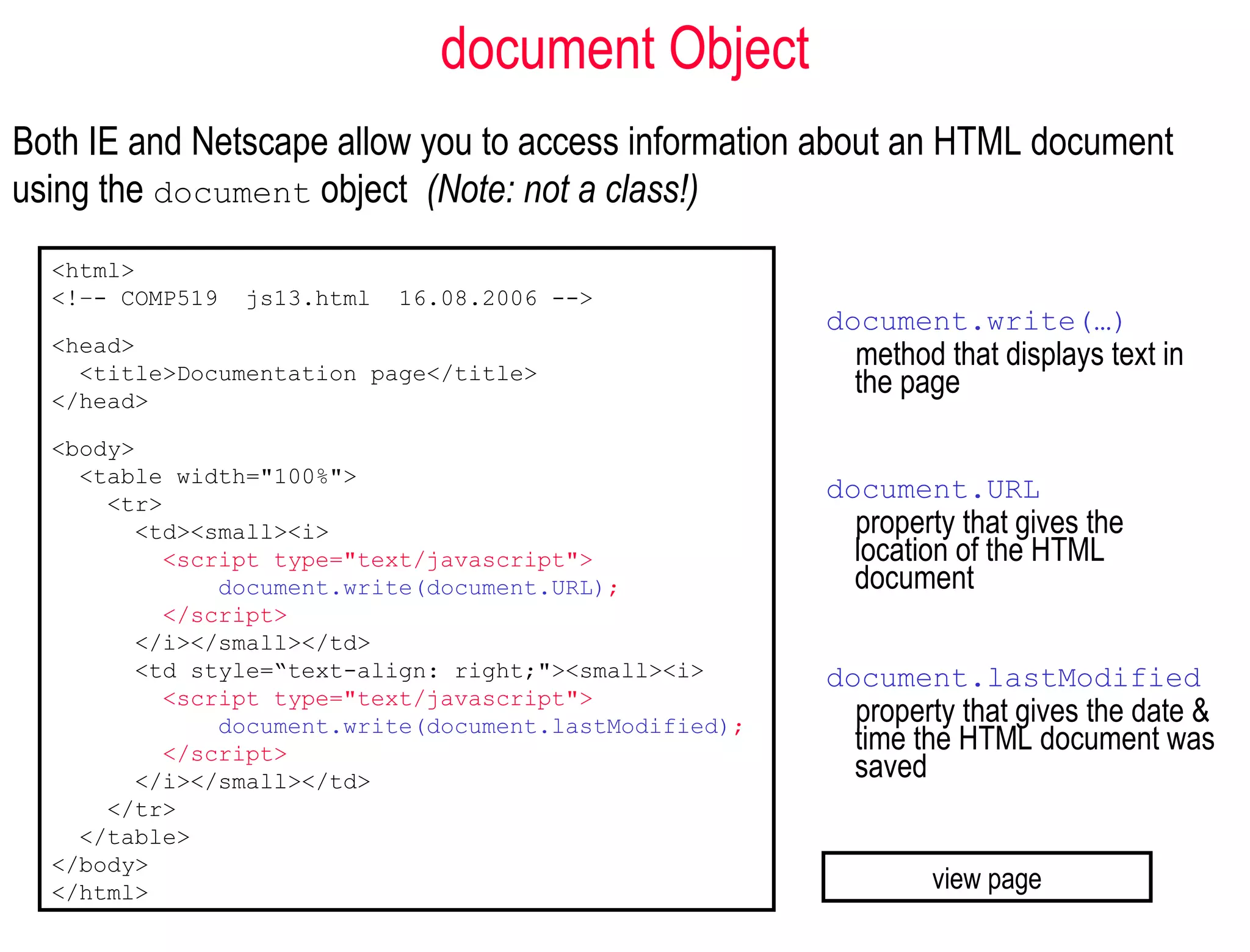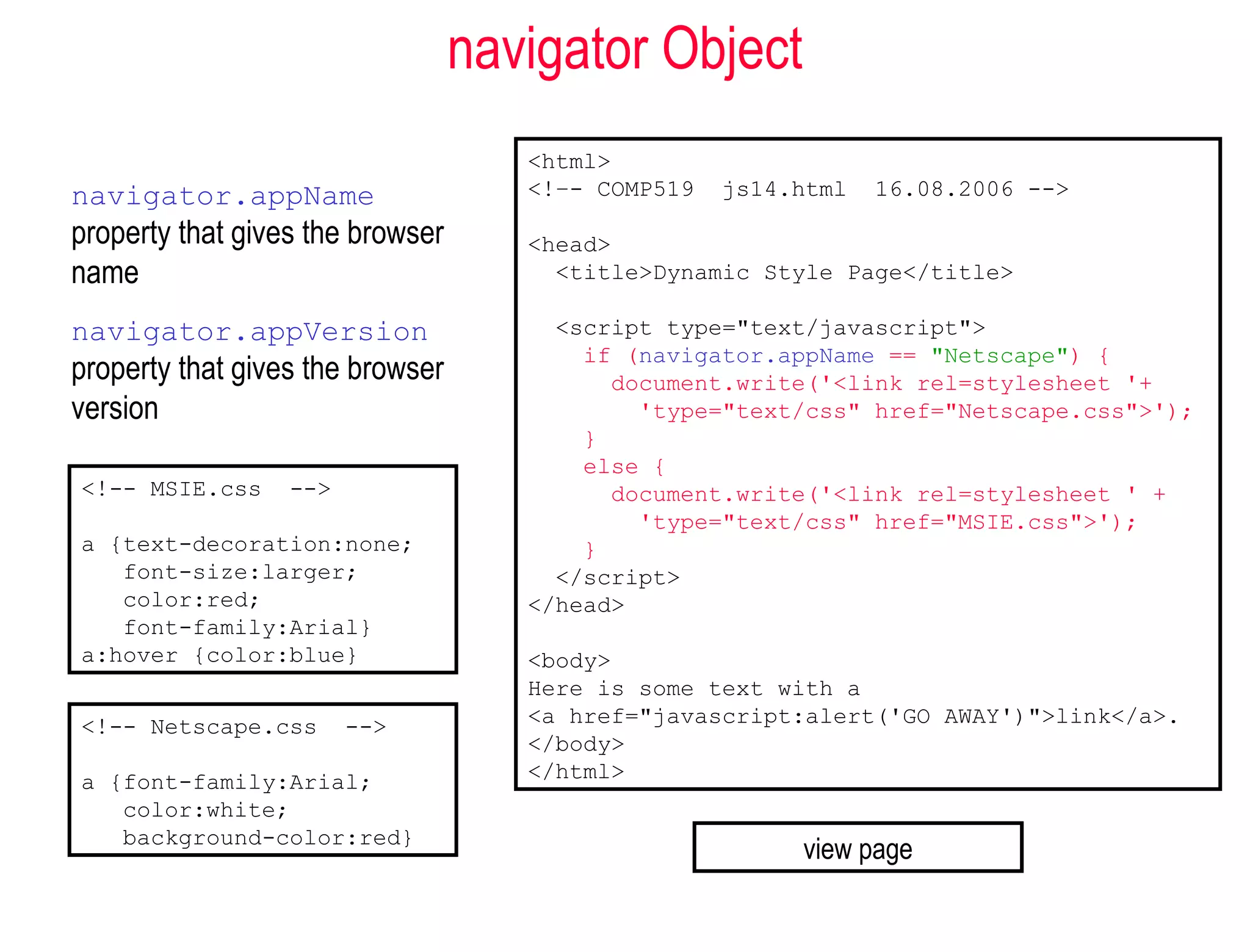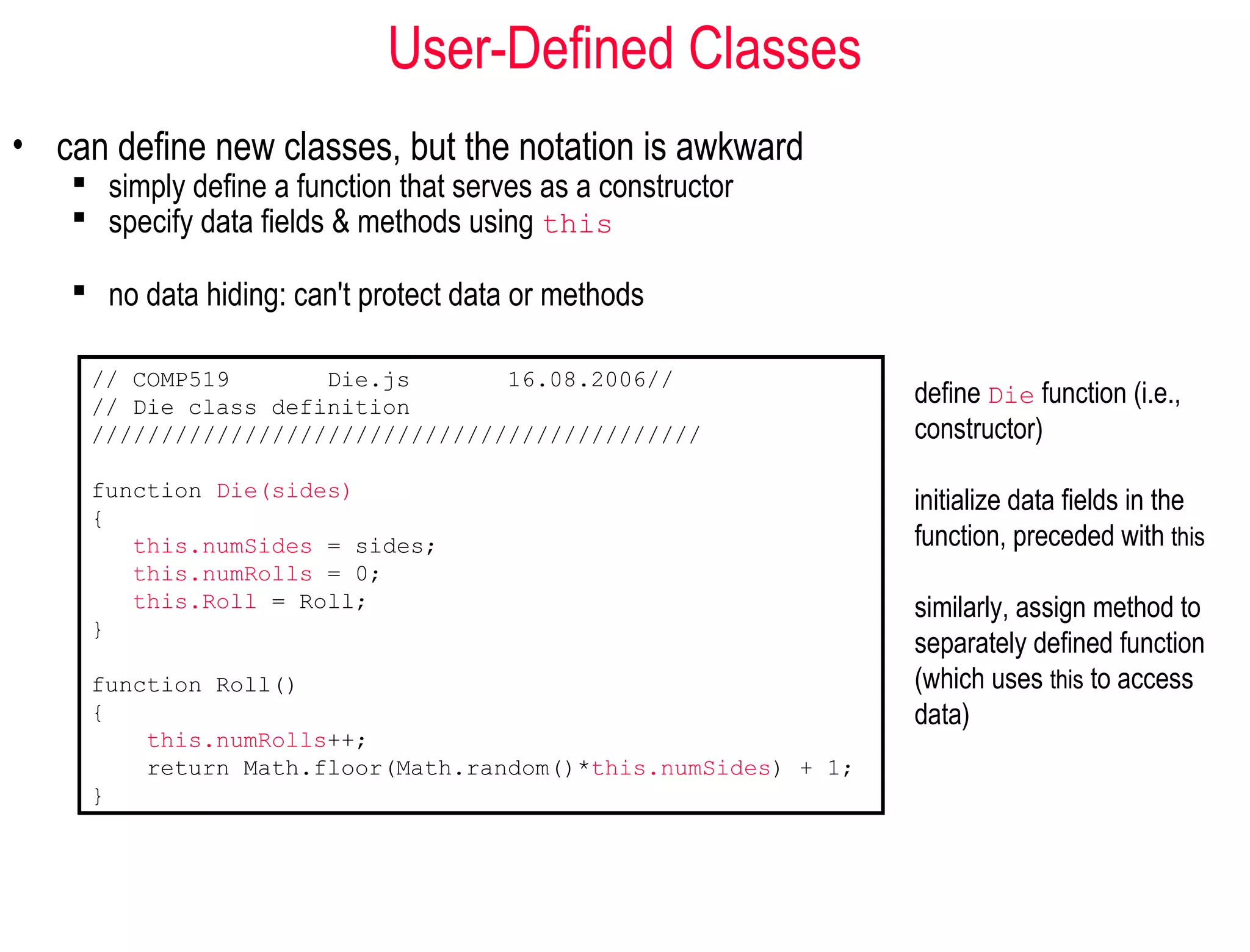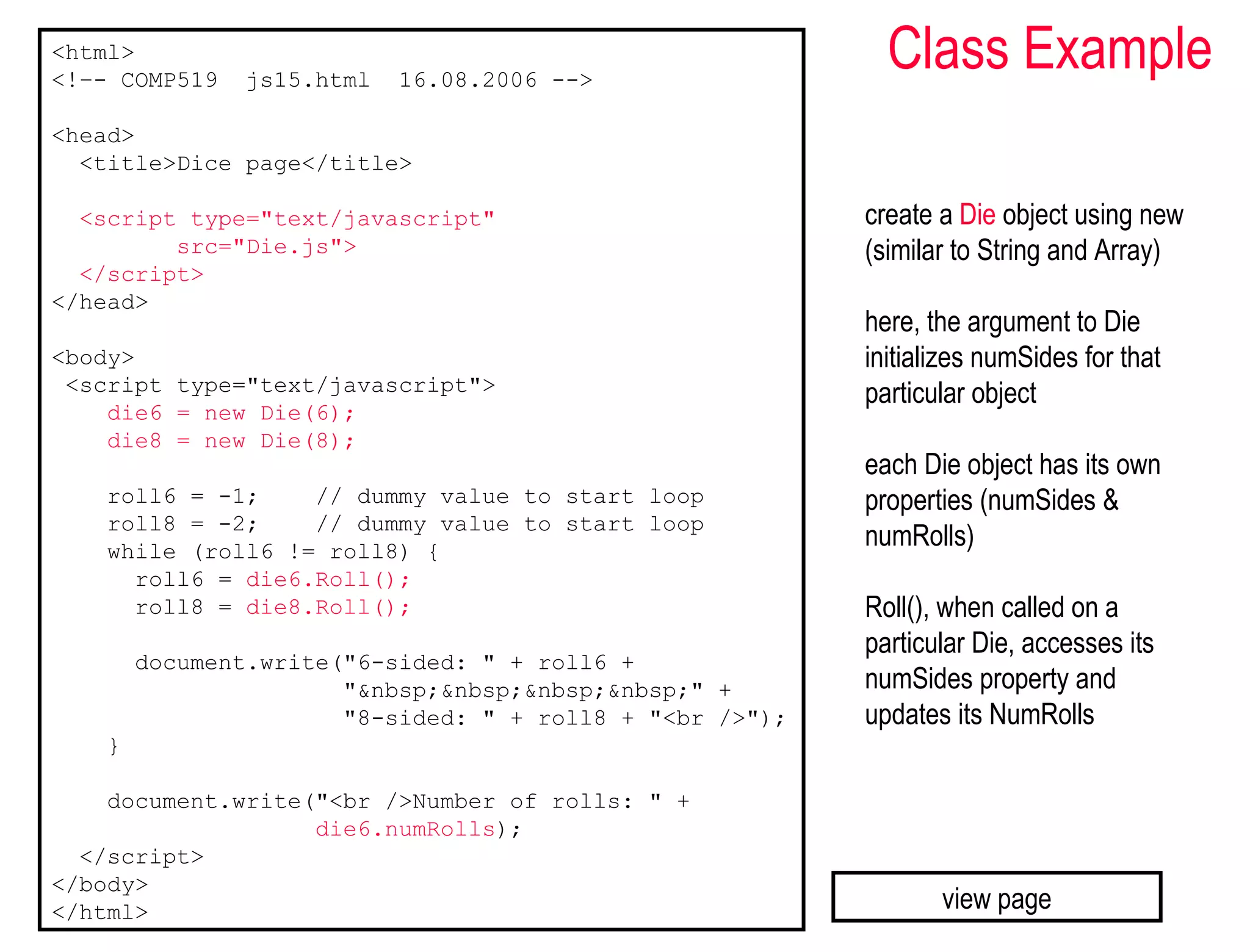This document provides an overview of client-side programming with JavaScript. It discusses JavaScript versus other scripting languages like JScript and VBScript. It covers common JavaScript tasks like form validation, image rollovers, and handling cookies. It then details various JavaScript concepts like data types, expressions, control statements, functions, strings, and arrays. It also discusses how to define and use functions as well as JavaScript libraries.
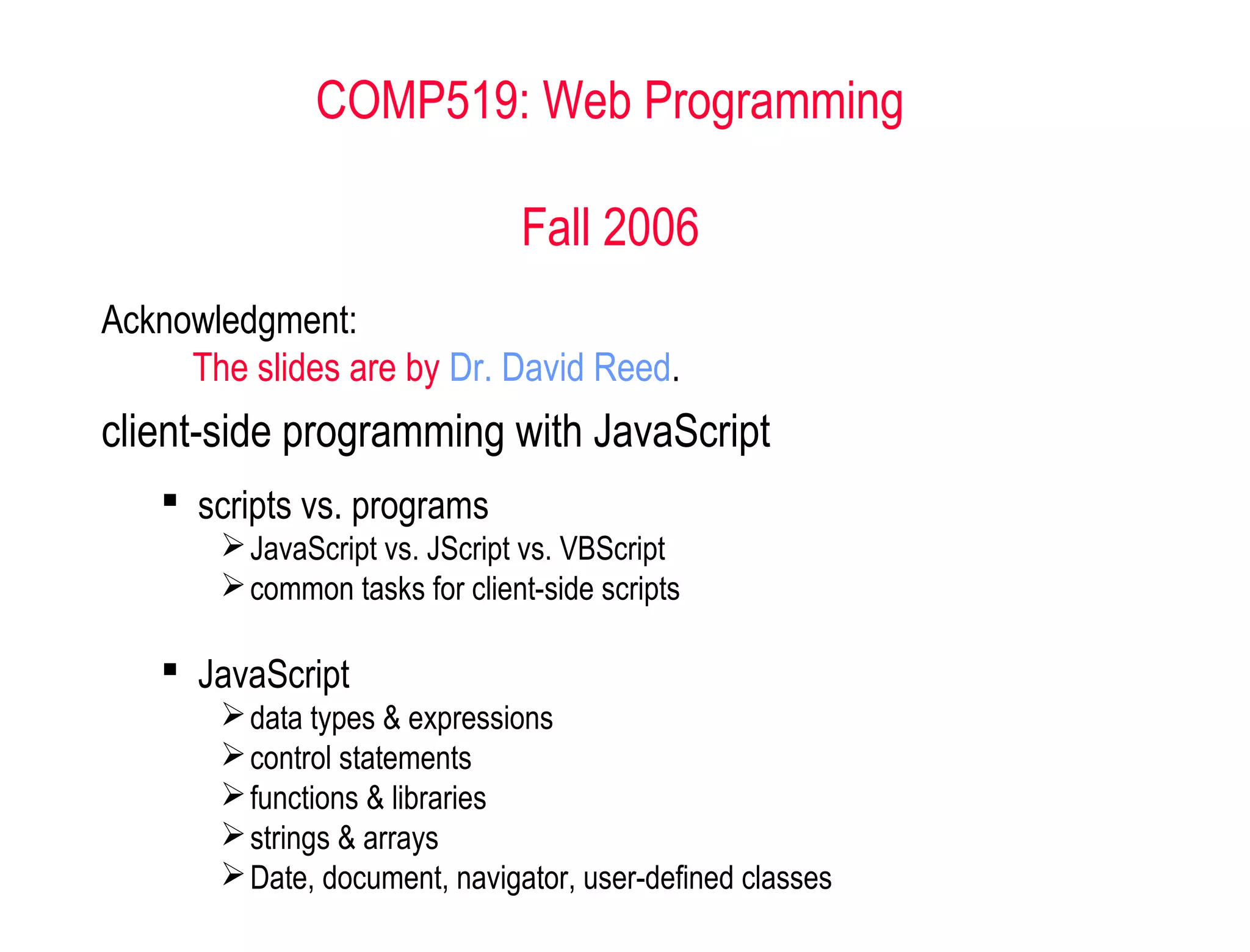
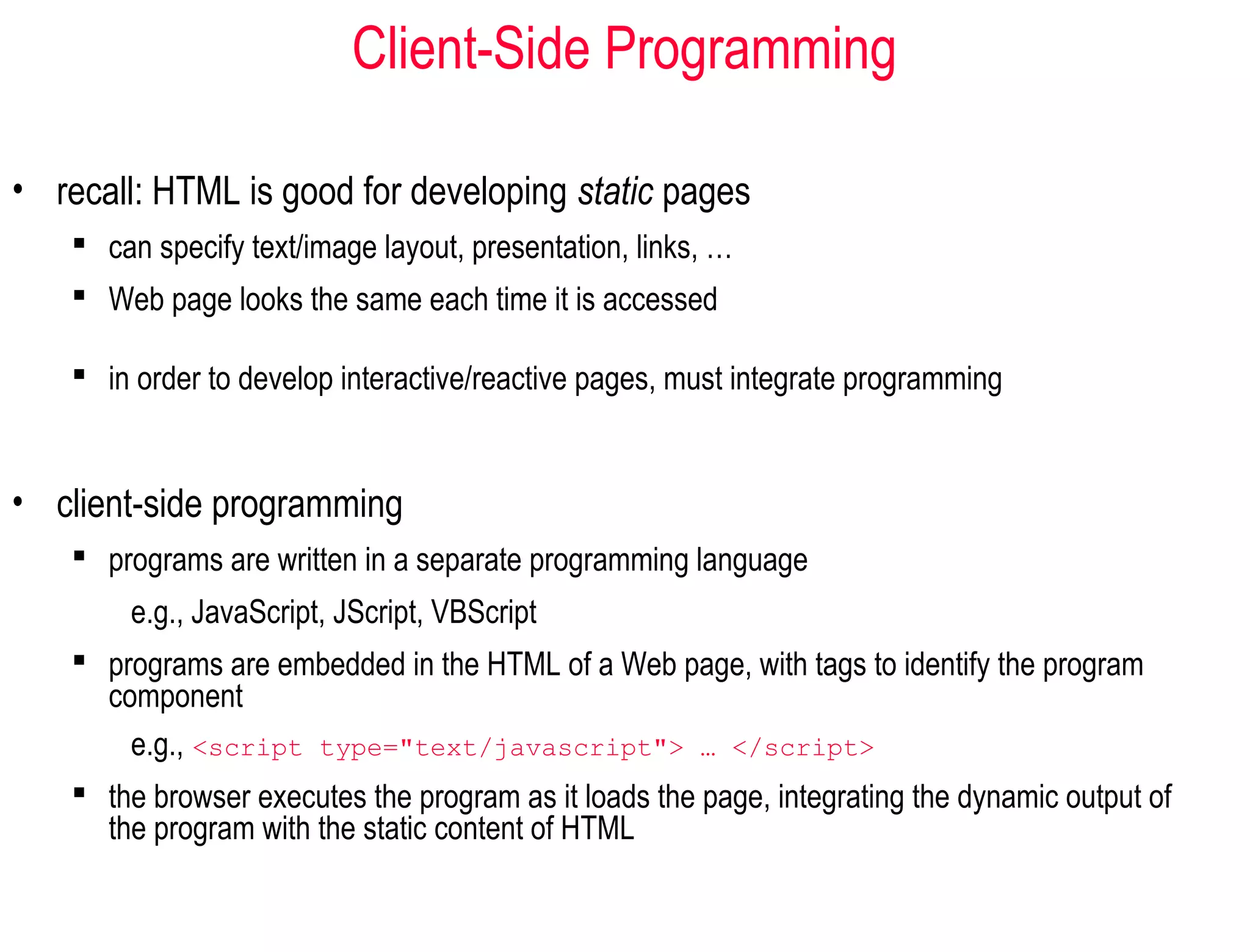
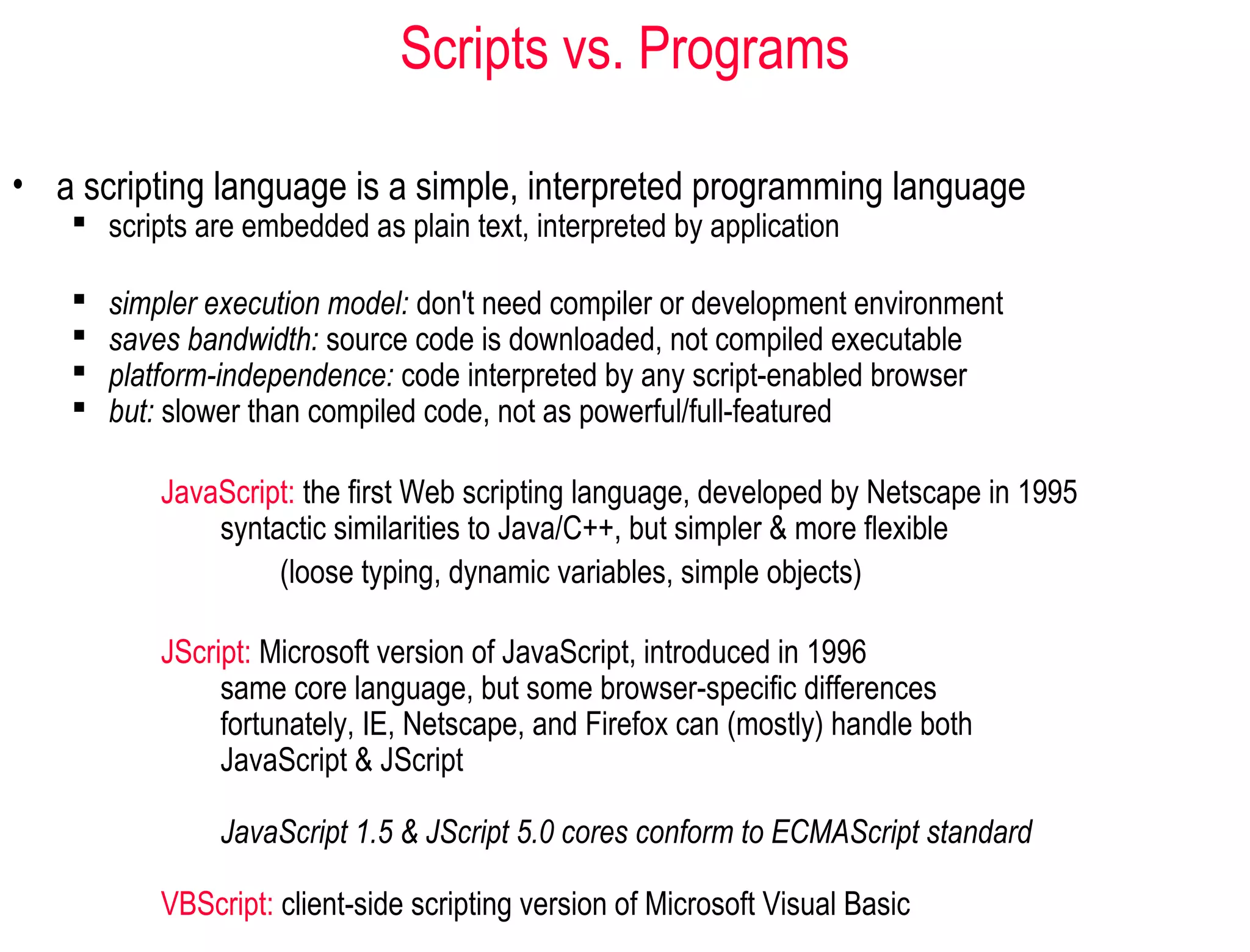
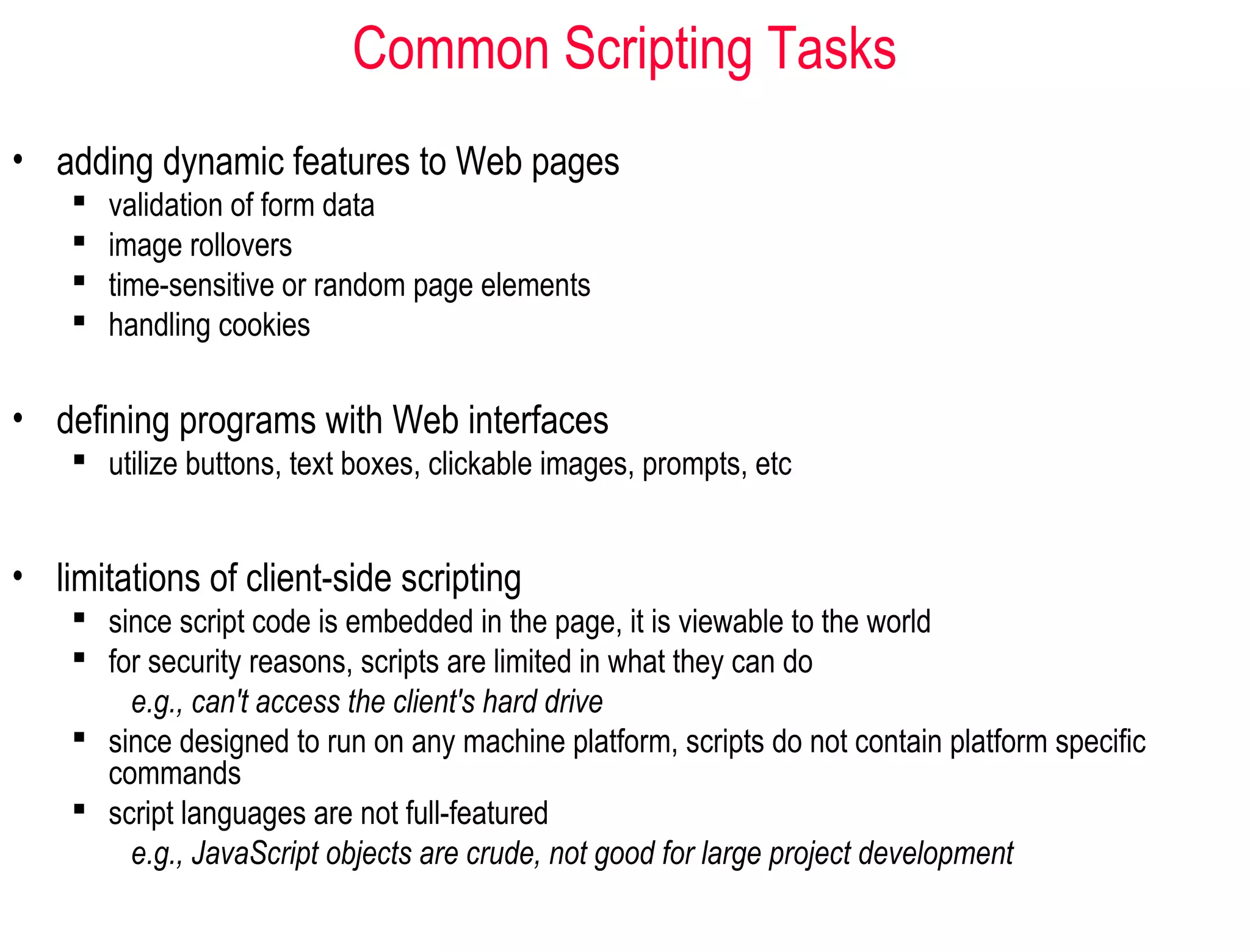
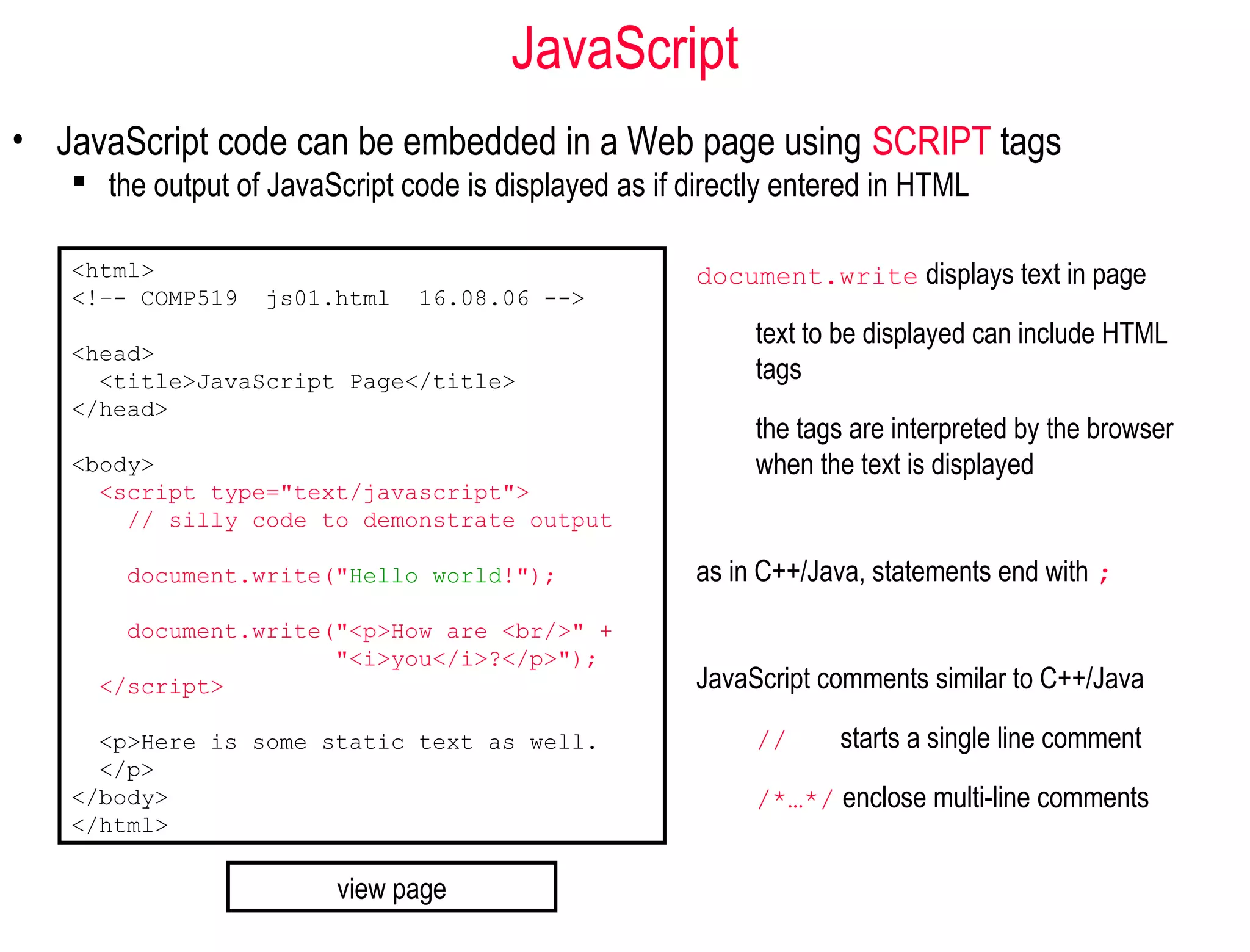
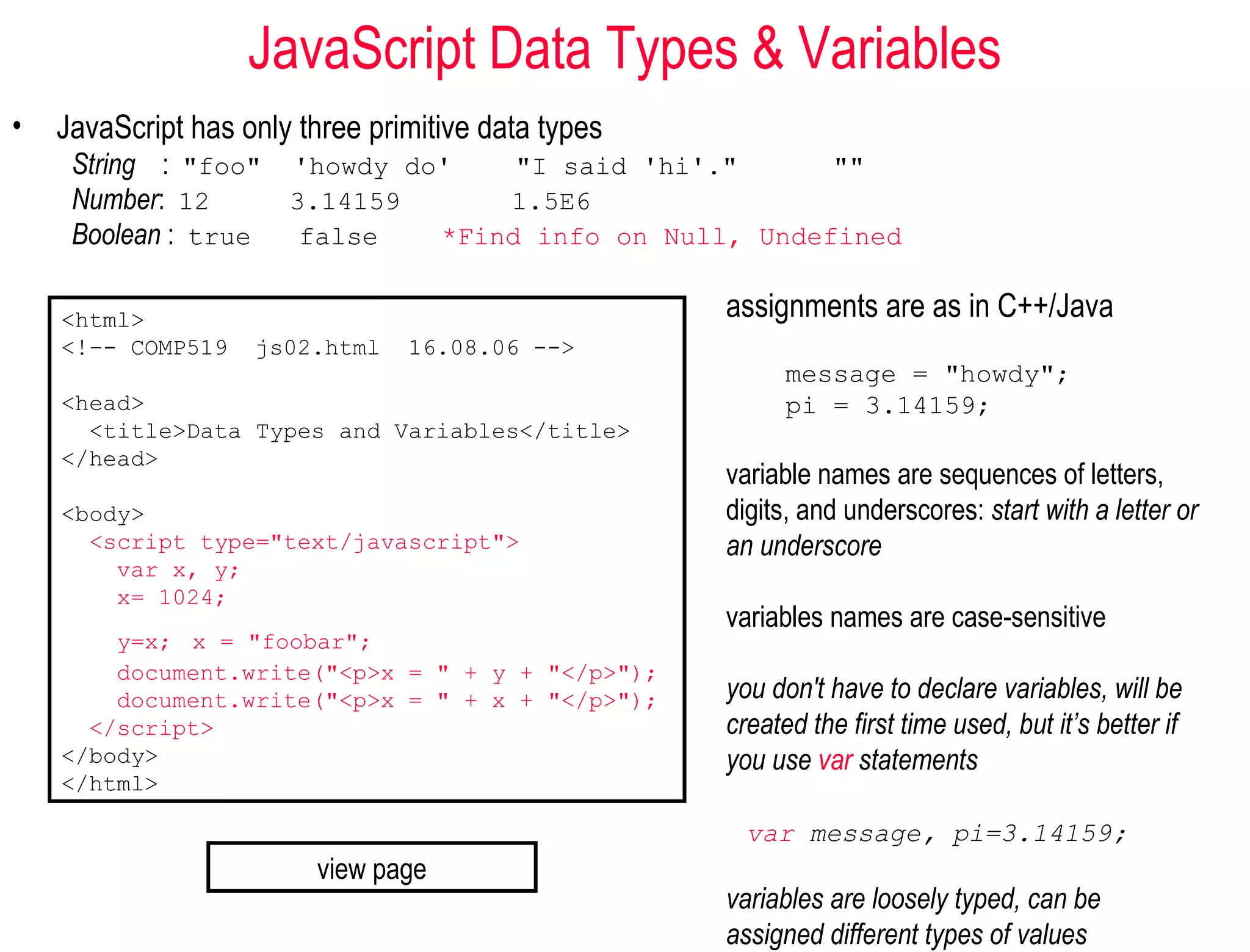
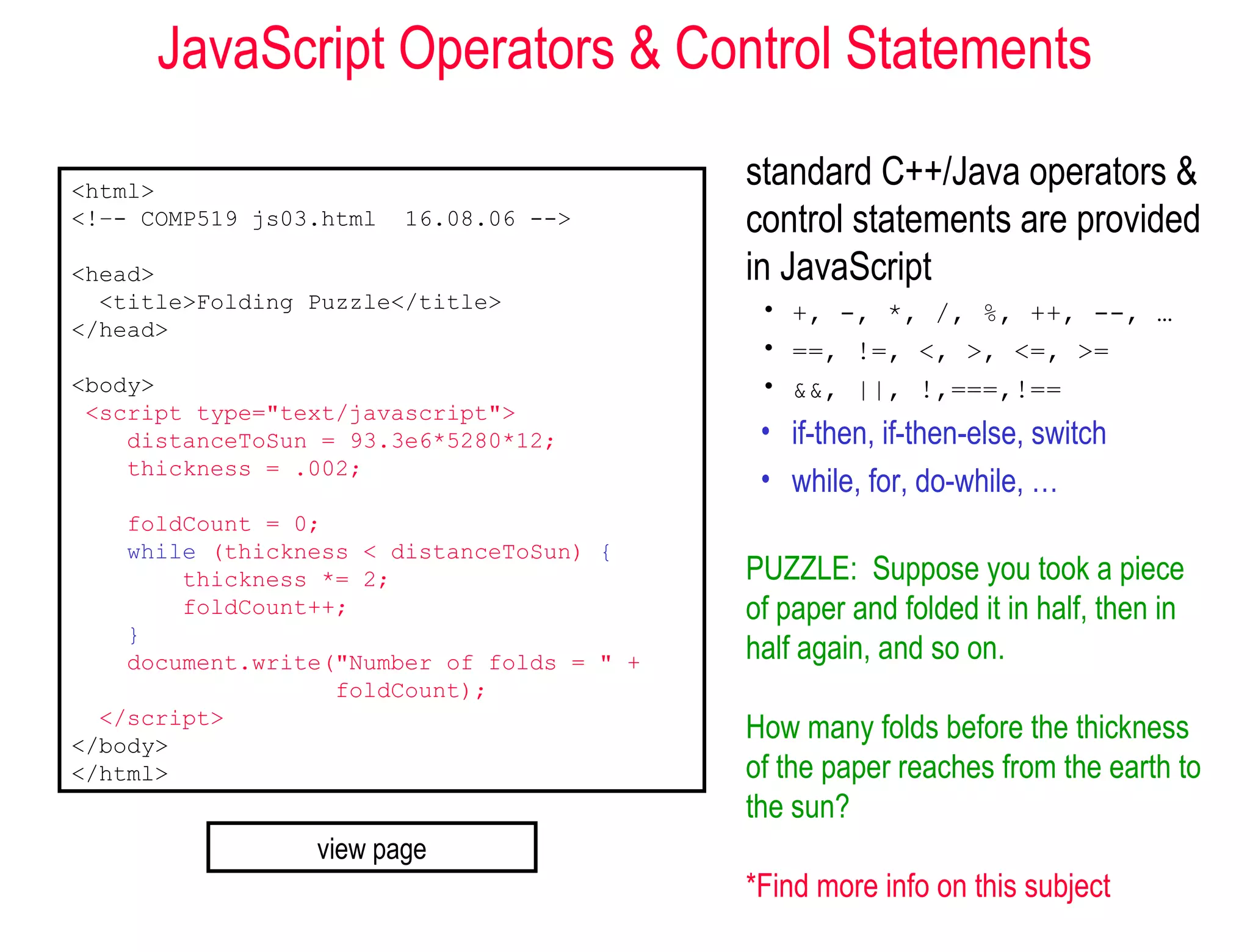
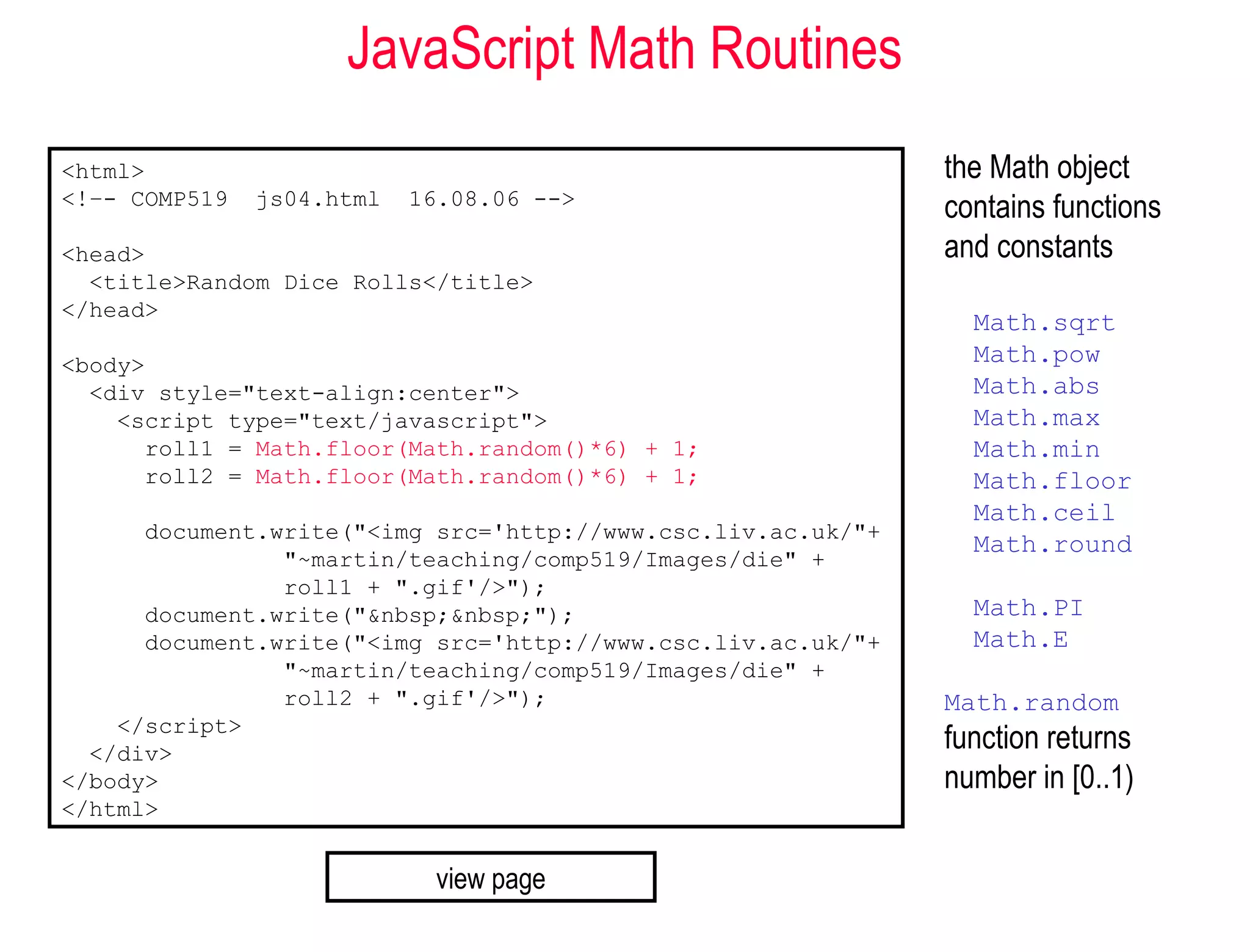
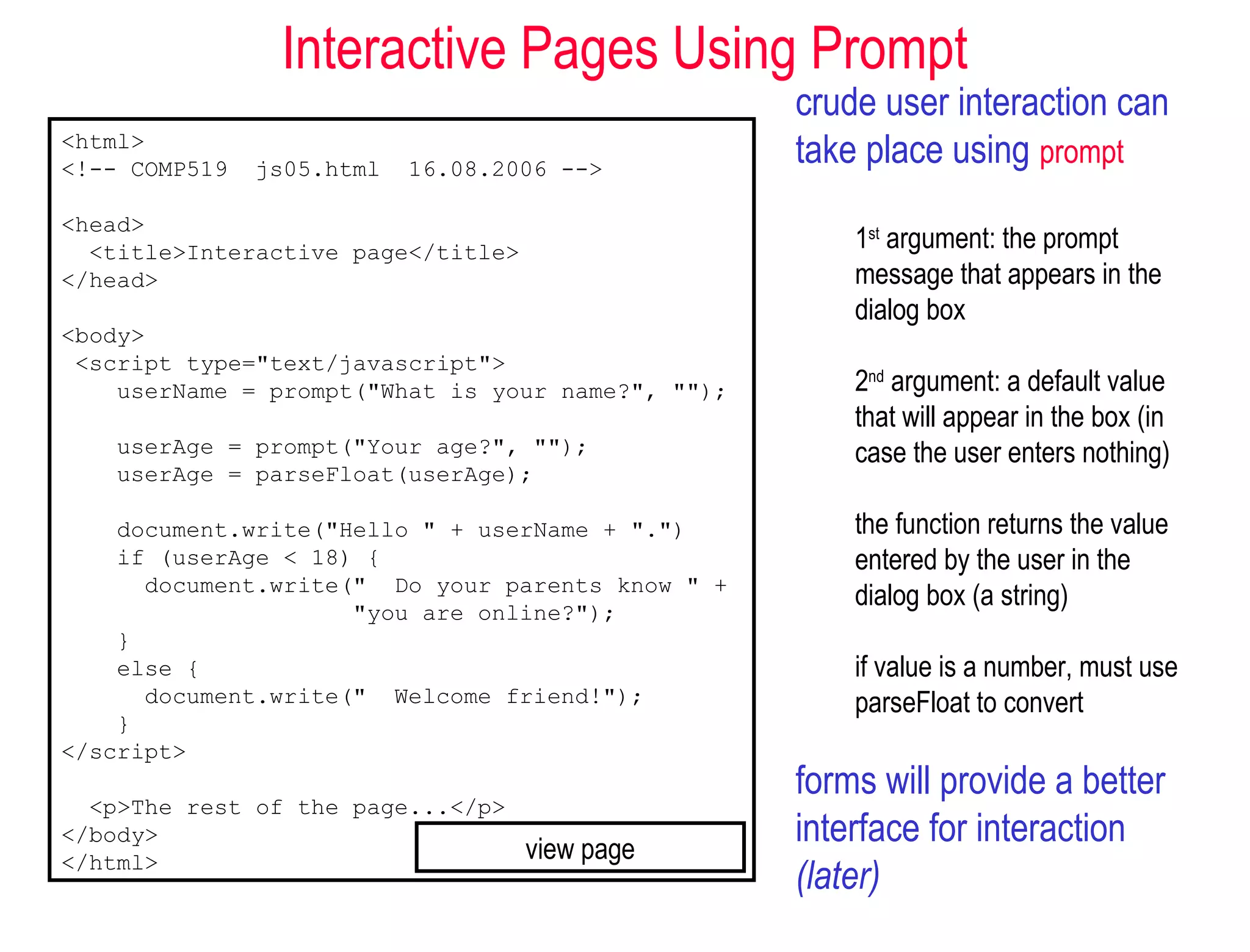
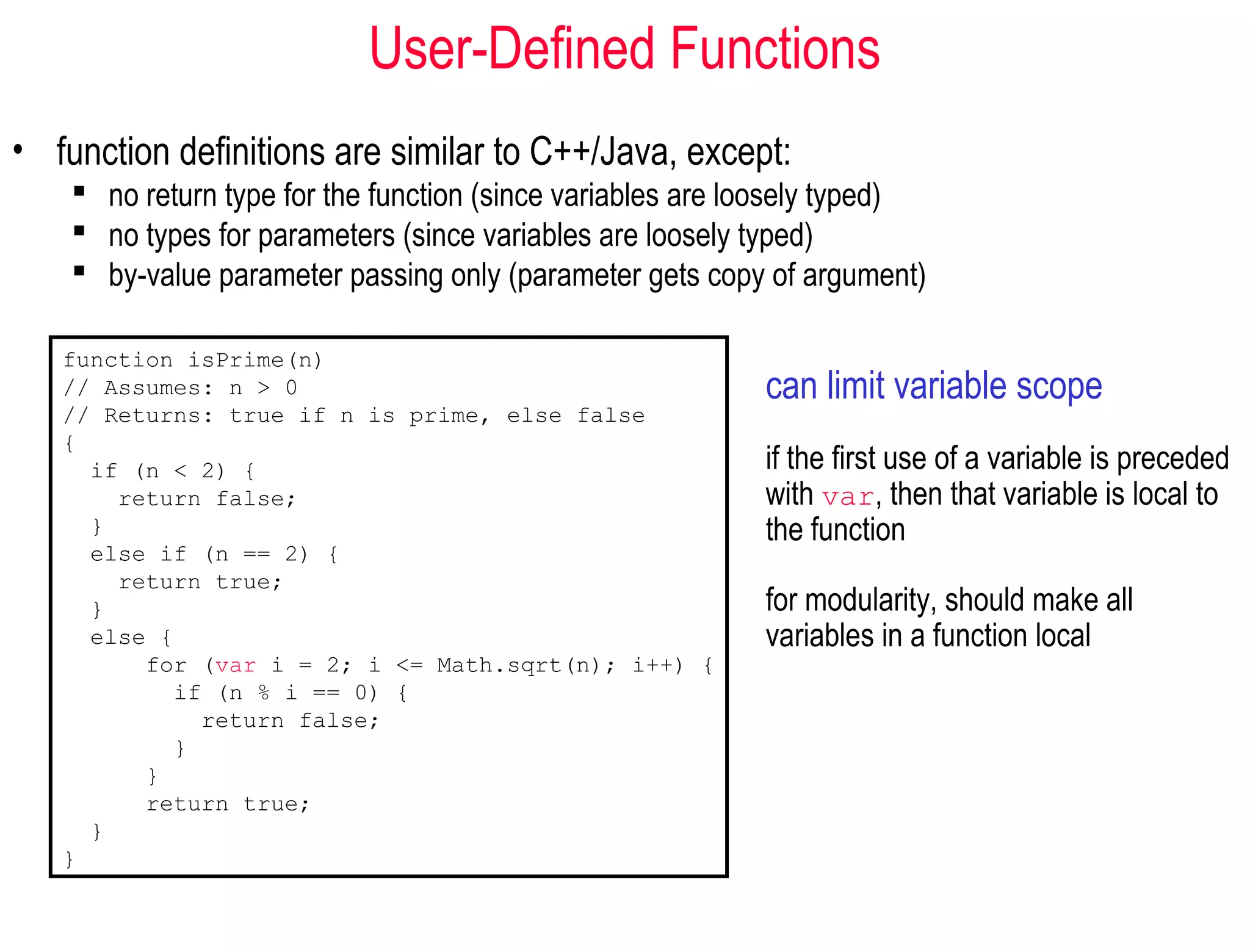
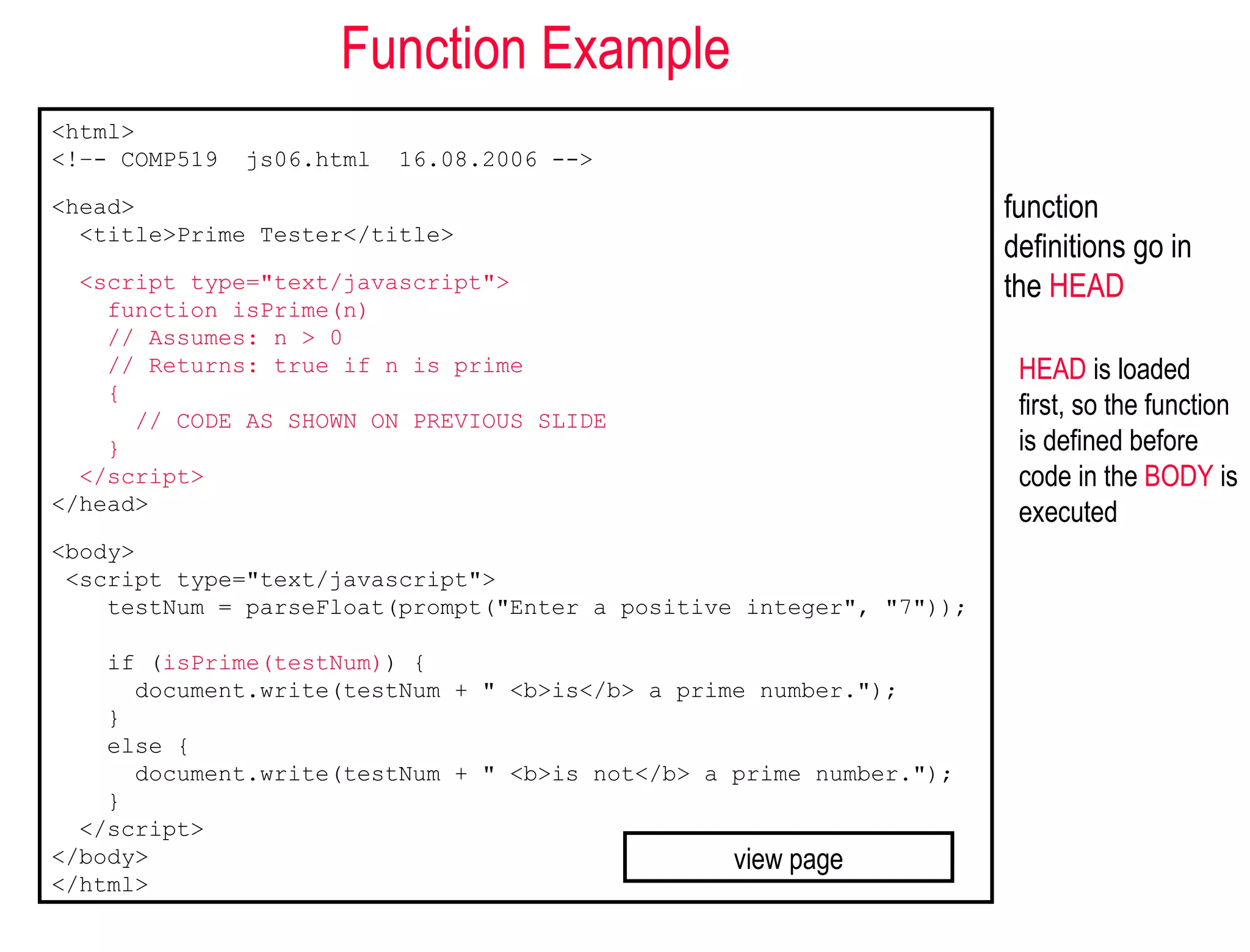
![<html>
<!–- COMP519 js07.html 16.08.2006 --> Another
<head>
<title> Random Dice Rolls Revisited</title> Example
<script type="text/javascript">
function RandomInt(low, high)
// Assumes: low <= high
// Returns: random integer in range [low..high]
{
return Math.floor(Math.random()*(high-low+1)) + low;
recall the dynamic dice
} page
</script>
</head>
could define a function for
<body> generating random
<div align="center">
<script type="text/javascript"> numbers in a range, then
roll1 = RandomInt(1, 6); use whenever needed
roll2 = RandomInt(1, 6);
document.write("<img src='http://www.csc.liv.ac.uk/"+
easier to remember,
"~martin/teaching/comp519/Images/die" + promotes reuse
roll1 + ".gif'/>");
document.write(" ");
document.write("<img src='http://www.csc.liv.ac.uk/"+
"~martin/teaching/comp519/Images/die" +
roll2 + ".gif'/>");
</script>
</div>
</body> view page
</html>](https://image.slidesharecdn.com/javascript-121201135058-phpapp02/75/Java-script-12-2048.jpg)
![JavaScript Libraries
• better still: if you define functions that may be useful to many pages, store in a
separate library file and load the library when needed
• the file at http://www.csc.liv.ac.uk/~martin/teaching/comp519/JS/random.js
contains definitions of the following functions:
RandomNum(low, high) returns random real in range [low..high)
RandomInt(low, high) returns random integer in range [low..high)
RandomChar(string) returns random character from the string
RandomOneOf([item1,…,itemN]) returns random item from list/array
Note: as with external style sheets, no tags in the JavaScript library file
load a library using the SRC attribute in the SCRIPT tag (nothing between the tags)
<script type="text/javascript"
src="http://www.csc.liv.ac.uk/~martin/teaching/comp519/JS/random.js">
</script>](https://image.slidesharecdn.com/javascript-121201135058-phpapp02/75/Java-script-13-2048.jpg)
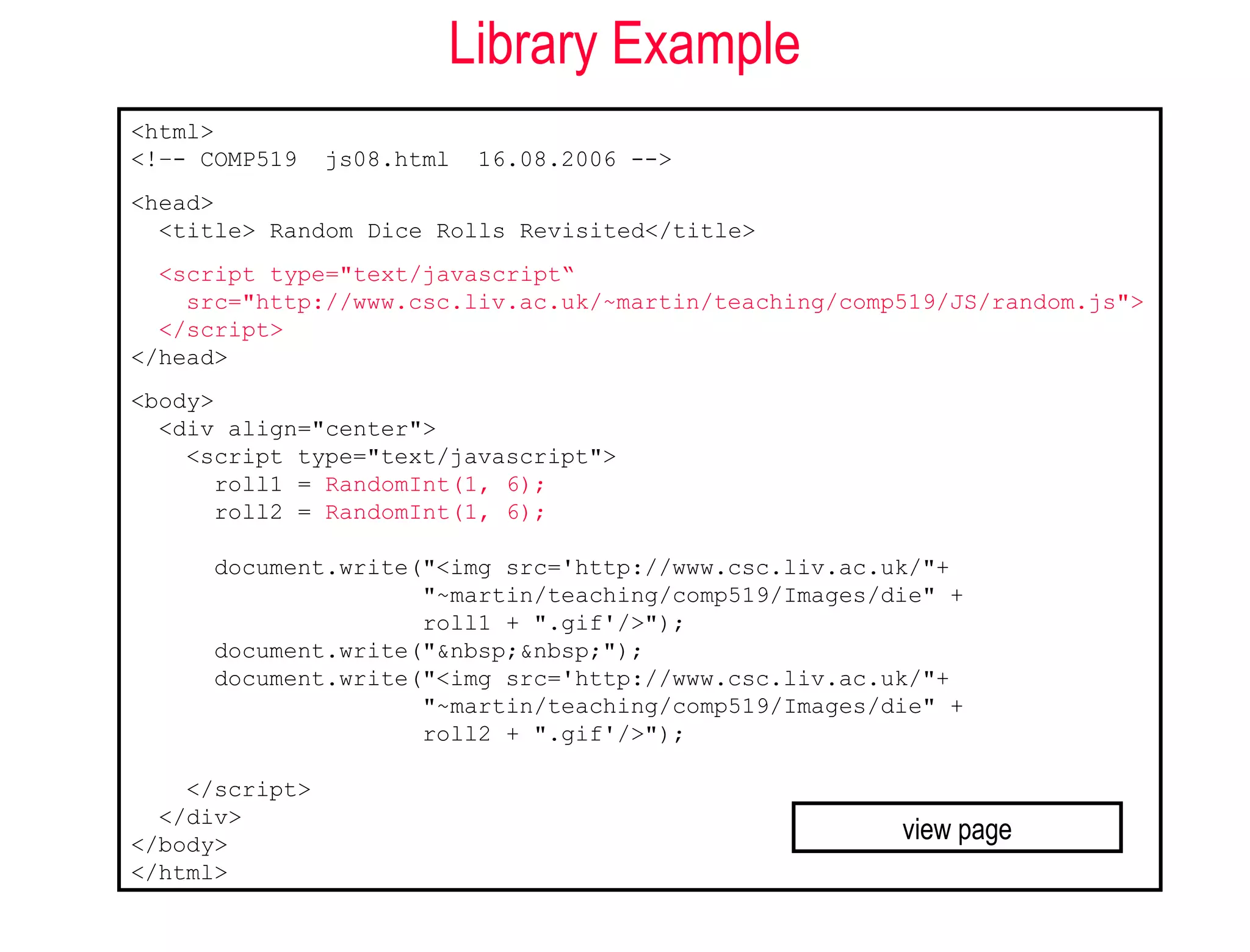
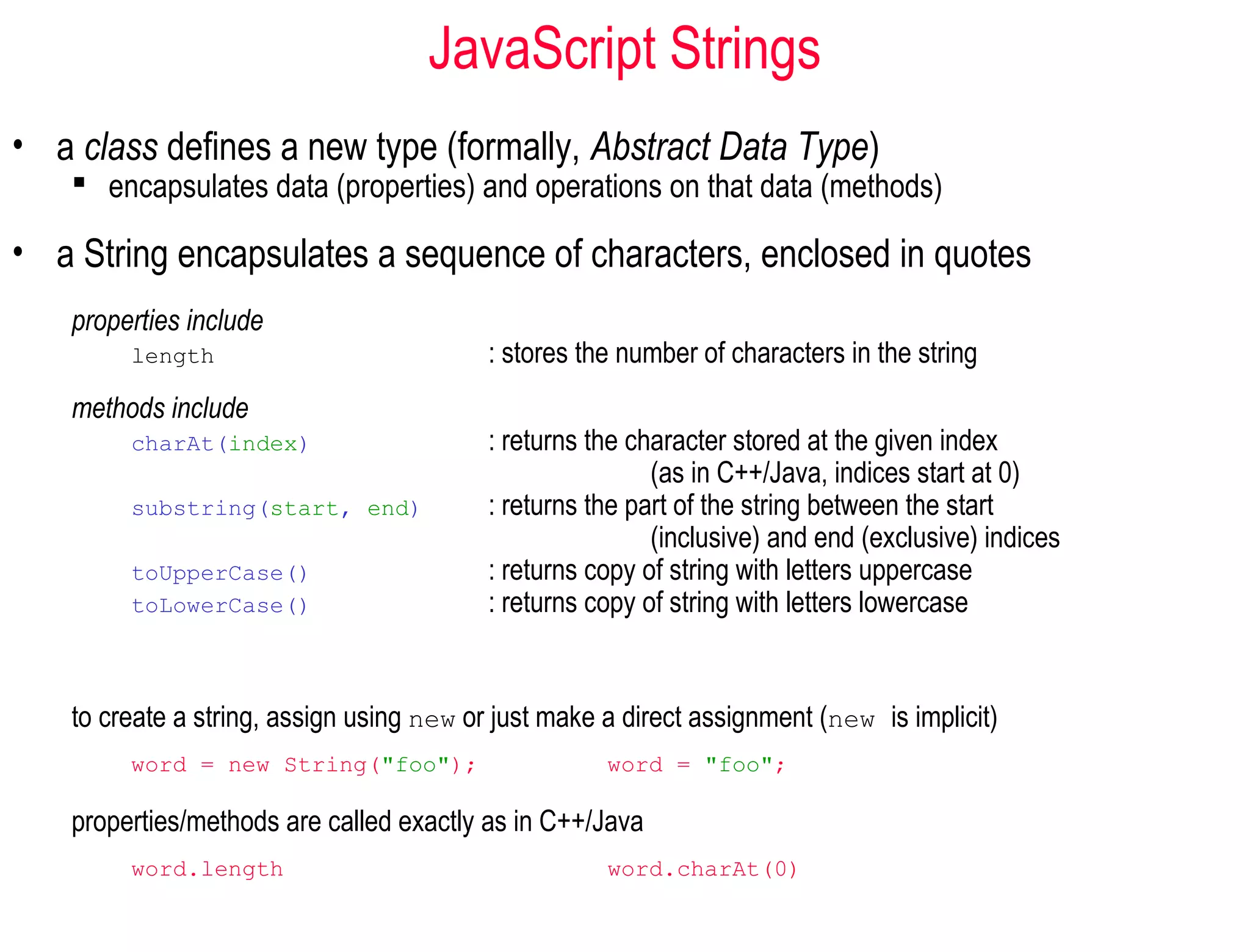
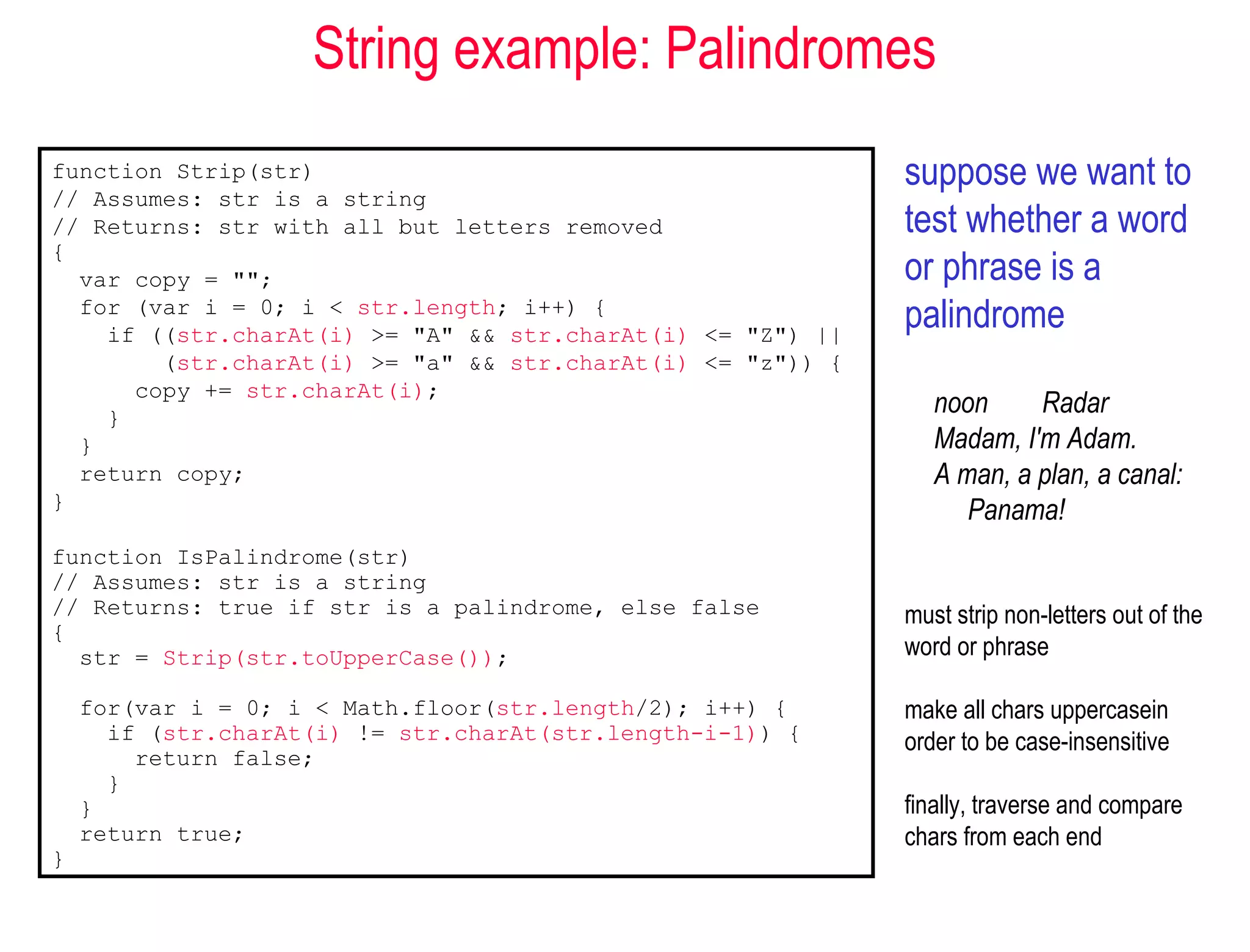
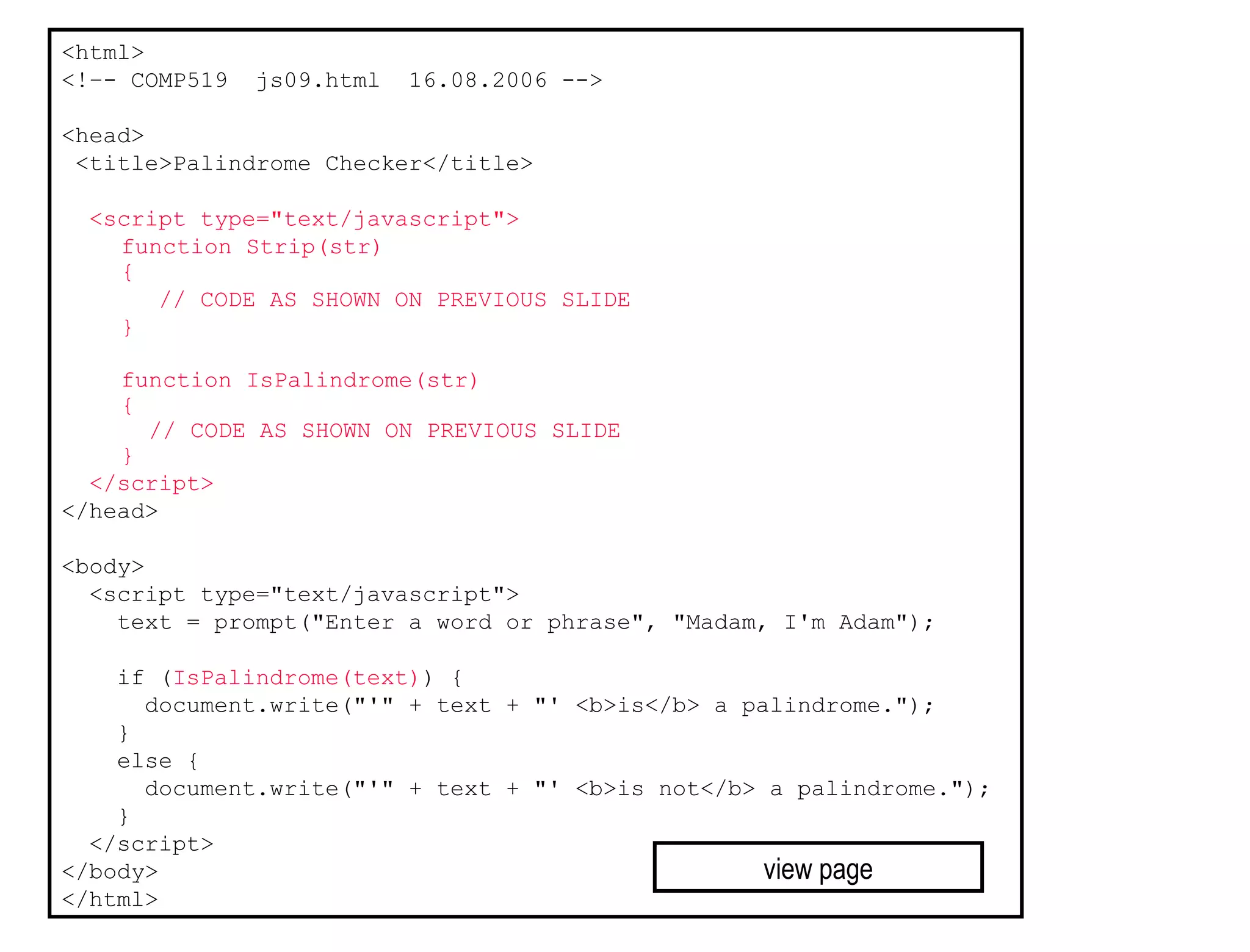
![JavaScript Arrays
• arrays store a sequence of items, accessible via an index
since JavaScript is loosely typed, elements do not have to be the same type
to create an array, allocate space using new (or can assign directly)
items = new Array(10); // allocates space for 10 items
items = new Array(); // if no size, will adjust dynamically
items = [0,0,0,0,0,0,0,0,0,0]; // can assign size & values []
to access an array element, use [] (as in C++/Java)
for (i = 0; i < 10; i++) {
items[i] = 0; // stores 0 at each index
}
the length property stores the number of items in the array
for (i = 0; i < items.length; i++) {
document.write(items[i] + "<br>"); // displays elements
}](https://image.slidesharecdn.com/javascript-121201135058-phpapp02/75/Java-script-18-2048.jpg)
![Array Example
<html> suppose we want to
<!–- COMP519 js10.html 16.08.2006 -->
<head> simulate die rolls and
<title>Die Statistics</title> verify even distribution
<script type="text/javascript"
src="http://www.csc.liv.ac.uk/~martin/teaching/comp519/JS/r
andom.js"> keep an array of counters:
</script>
</head>
initialize each count to 0
<body>
<script type="text/javascript">
numRolls = 60000; each time you roll X,
dieSides = 6; increment rolls[X]
rolls = new Array(dieSides+1); display each counter
for (i = 1; i < rolls.length; i++) {
rolls[i] = 0;
}
for(i = 1; i <= numRolls; i++) {
rolls[RandomInt(1, dieSides)]++;
}
for (i = 1; i < rolls.length; i++) {
document.write("Number of " + i + "'s = " +
rolls[i] + "<br />");
}
</script>
</body> view page
</html>](https://image.slidesharecdn.com/javascript-121201135058-phpapp02/75/Java-script-19-2048.jpg)
